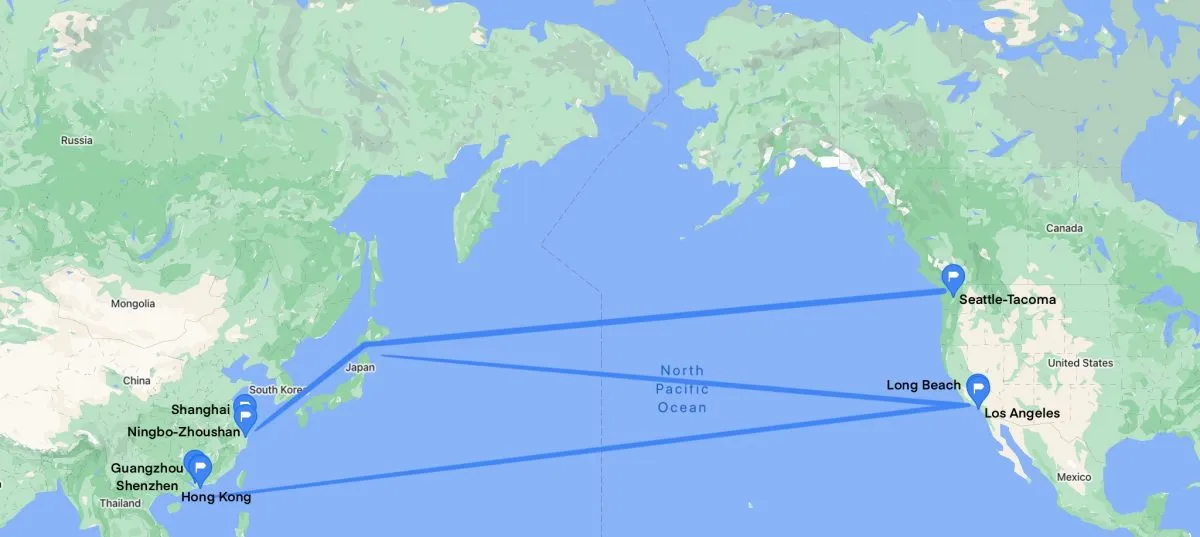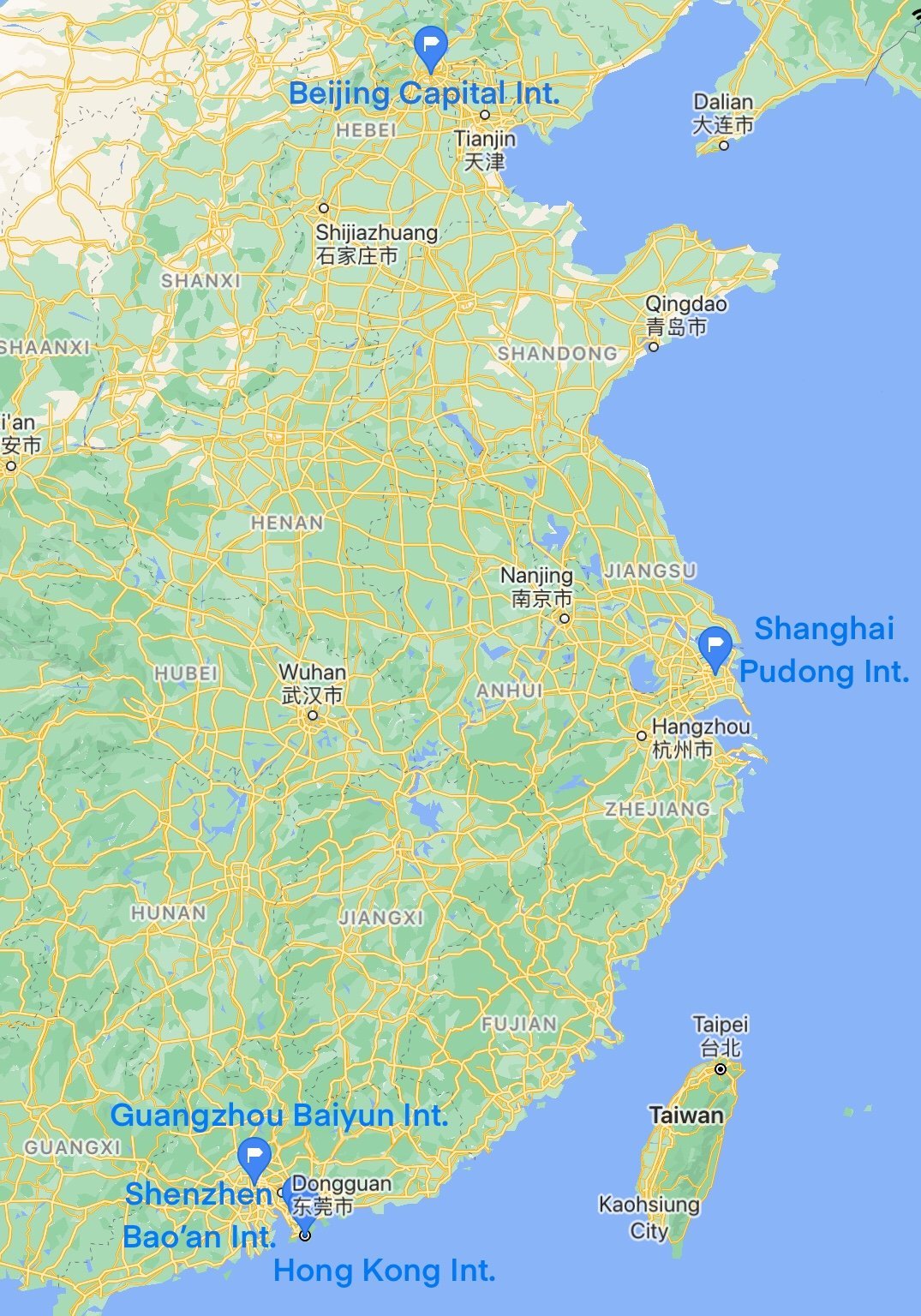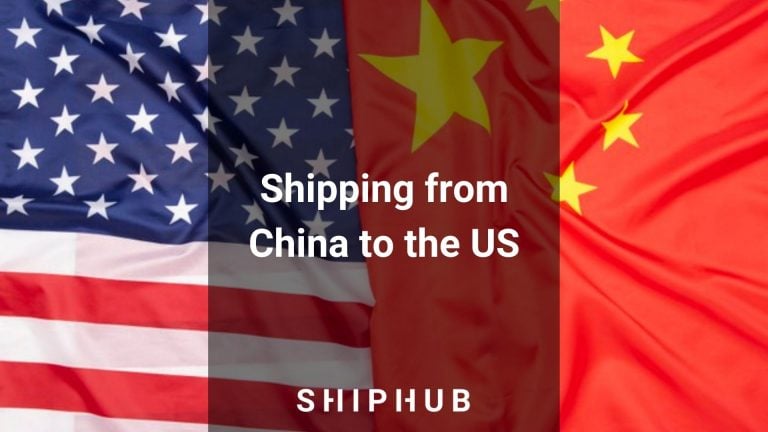China’s position as the second-biggest economy makes it an incredibly valuable trade partner. For years, a large part of the relationship between the US and China has been centered around trade, as China and the US have become each other’s leading trading partners. As of 2022, China’s main import products were broadcasting equipment, computers, and office machine parts. What are the best methods of shipping from China to the US?
Available types of transport
Chinese importers often trade with American entrepreneurs, so they are familiar with the various shipping methods. Since the Pacific Ocean separates China and the US, we have two primary forms of transporting products from one continent to the other. Which way you choose will be based on different variables, such as the product load, destination, and timing requirement:
- ocean freight
- air freight
Ocean freight from China to the US
The most affordable shipping option from China to the US is maritime transport. It is also the best way to transport large and bulky purchases, as cargo ships carry both Less than Container Load (LCL) and Full Container Load (FCL).
Unfortunately, it is also the slowest available option, as it can take up to 35 days for a cargo ship to arrive from China. Transit time will vary depending on the chosen seaport of departure and arrival. On average, ocean freight will take about ten days longer if the port of arrival is located on the East Coast rather than the West Coast, as the route is less straightforward.

Major ports in China
Port of Shanghai is the largest seaport in the world since overtaking Singapore’s position in 2010. The Shanghai seaport spans over 3500 km2 and is connected to other, smaller ports, allowing it to process much more cargo than any different port in the world. The vast majority of incoming and outgoing traffic is handled by the Yangshan Port, which is the largest automated port in the world.
Port of Shenzhen is the second-largest seaport in China and the fourth-largest in the world. It is located in the southern part of China, in the Shenzhen Special Economic Zone. Similar to the port of Shanghai, it is also formed by several smaller ports, and it is one of the fastest-growing seaports in the world. Closely located to Hong Kong, it is part of the Hong-Kong-Shenzhen Western corridor, which crosses the border between China and Hong Kong.
Port of Ningbo-Zhoushan is the busiest seaport globally in terms of cargo tonnage. It is located in the Zhejiang province, which is one of the more prosperous Chinese provinces.
Port of Hong Kong is a deep-water seaport located in the south of China. Although it is part of China, Hong Kong functions under different administrative laws, which might be more beneficial to US shippers. It is one of the busiest seaports in the world, connecting over 600 destinations worldwide. The port of Hong Kong includes mid-stream sites, which allow ships to empty the vessel during hazardous weather conditions safely.
Port of Guangzhou is one of the biggest container ports in the world. It is one of the most well-connected ports in mainland China, with easy access to most Chinese provinces. Ships from the port of Guangzhou also reach over 80 countries worldwide. This seaport is a key economic element of the Pearl River Delta region and its surrounding provinces. The deep-water port of Nansha handles over 70% of all cargo in Guangzhou.
Air freight from China to the US
In case of any time constraints, air freight is the way to go. Indeed, shipping via cargo airplanes might take as little as 2-3 days, although transit time might take up to 15 days, depending on the chosen cargo airport. Naturally, this form of shipping boasts much higher freight rates, and shipping goods heavier than 500kg is not recommended.
If the number of goods is particularly low (less than 150kg), it might be advantageous to consider Express shipping. Regular air freight involves complex processing that is not present when shipping through international couriers (FedEx, UPS, DHL, etc.), and Express shipping guarantees a much shorter transit time (1-5 days).

Major cargo airports in China
Hong Kong International Airport, first opened in 1988, was the largest cargo airport in the world until very recently. In 2020 cargo traffic reached almost 4.5 million tons, accounting for nearly half of Hong Kong’s external trade. Hong Kong International Airport is considered the world’s premier international airfreight hub due to its many available services and facilities. It handles over 100 airlines and services in over 180 cities worldwide.
Shanghai Pudong International Airport is the second-largest cargo airport hub in China and the third-largest in the world. It was first opened in 1999. It is home to DHL’s largest express hub in Asia, as well as FedEx and UPS.
Beijing Capital International Airport is one of two international cargo airports in Beijing. It is the third-largest cargo hub in China and has been operating since the late fifties. It is also the 15th busiest airport in the world in terms of cargo traffic.
Guangzhou Baiyun International Airport is China’s fourth busiest airport in terms of cargo traffic as of 2020. It has been operating since 2004. Worldwide, Guangzhou’s airport is listed as the 16th busiest cargo hub, with total cargo traffic reaching 1,9 million tons, increasing 1,7%. It is one of the leading Asian hubs for FedEx Express.
Shenzhen Bao’an International Airport is the fifth busiest cargo hub in China. The airport has recently undergone various renovations and expansions to increase and better its available services. Additionally, it is the main Asian-Pacific hub for UPS Airlines.
Shipping from China to the US – tariffs and taxes
When shipping products from China to the US, it is essential to read about the various import duties, customs fees, and taxes that will need to be paid once the products enter US territory.
Firstly, any goods valued at over 800 USD will be taxed. In order to calculate tariffs, importers have to declare the transaction value of their products. If the value of the shipment is over 800 USD and the good is listed in the 301 Section, the import will be subjected to an additional China tariff of 7.5-25%.
How much does shipping from China to the US cost?
In order to facilitate the process of importing goods from China, it might be beneficial to compare offers from different shipping companies. By using the platform ShipHub.co, you will be able to easily compare freight rates, depending on your chosen mode of shipment and cargo. Fill in the form as shown in the picture below and find the best way of shipping from China to the US!

Read our other guides on shipping to the US:

